Sneak peak: Play is the engine of learning in early childhood. The best toys for toddlers to aid development and learning.
What is your child’s favorite toy right now? Have you ever thought to consider why this toy is their favorite? Does it provide comfort? Was it given to them by someone they love? Does it help them perform a skill or activity they enjoy? I ask these questions because I firmly believe that the toys our kids use really matter. They aren’t just simple playthings. These are the items that help our children build skills, boost learning, and solidify memories. For our youngest children, especially, toys are probably the center of their world. Let’s take a close look at some of the best toys for toddlers that can play a role in our children’s learning.
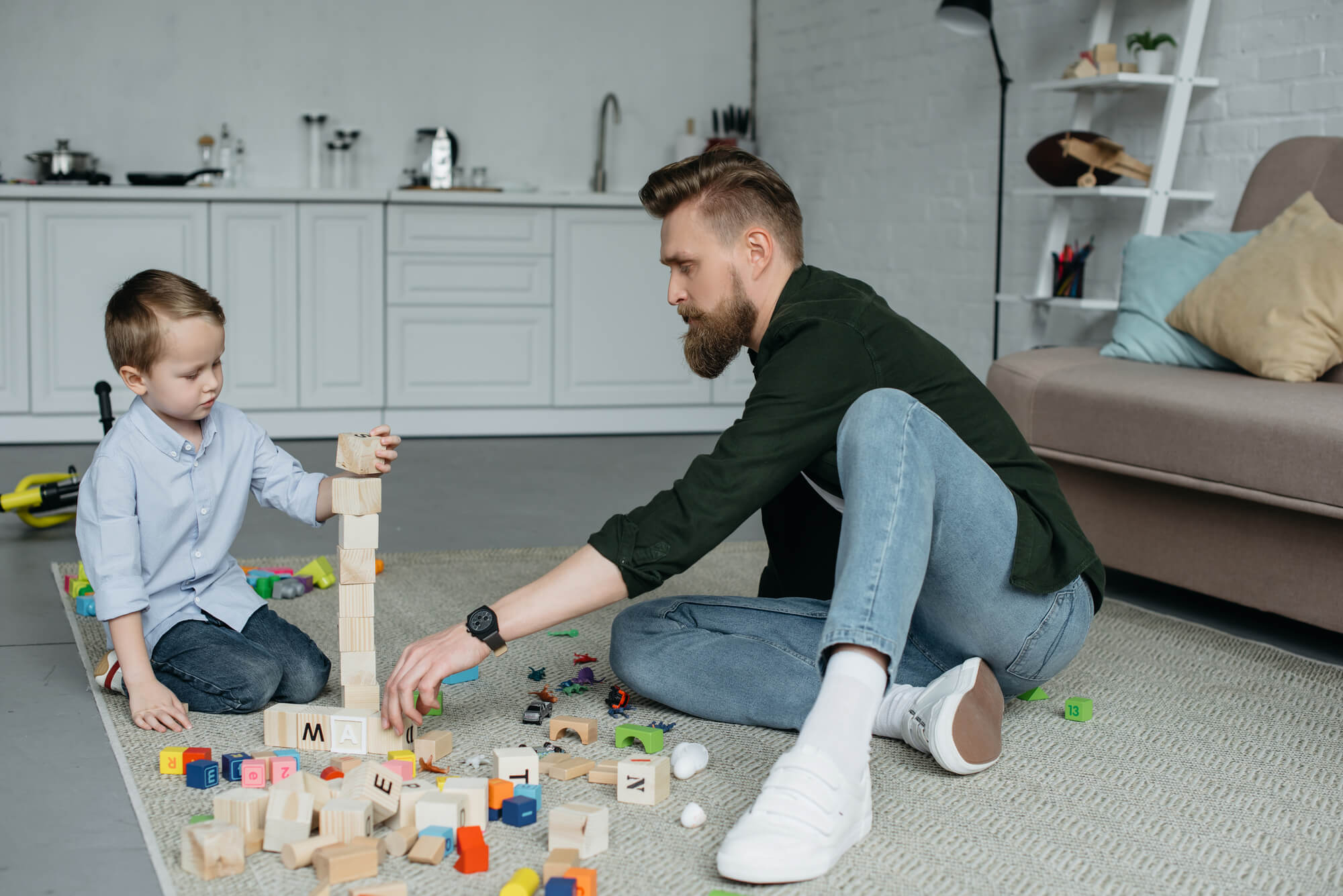
This post contains affiliate links. Purchasing through these links provides a small commission to me (at no added cost to you).
Related reading: Toddler Development: A Research-Based Guide for Parents
Play schemas
Has your child gone through a stage where all they wanted to do was one type of play? For example, they only wanted to play with trains or play pretend doctor or build forts. In many cases this urge to do one type of play related to a particular play schema. Play schema is just a fancy phrase to describe the type of play a child is drawn to at a given stage or age.
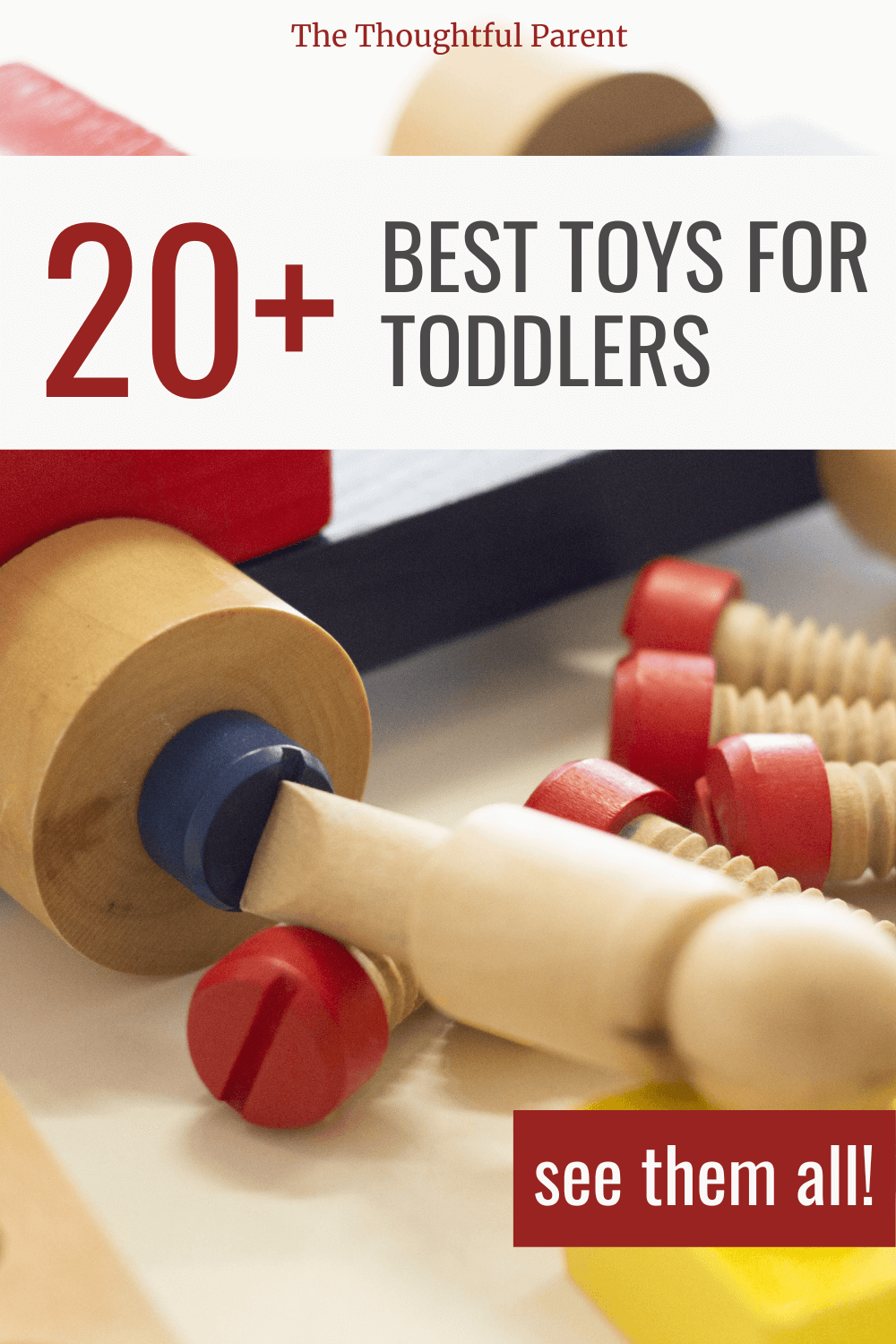
I had a feeling these existed based on watching my own kids but I didn’t really understand them until I read a wonderful article that explained all the different types. Understanding these schemas can be helpful in choosing the best toys for toddlers for their stage. Here’s a quick review of the different types of play schemas:
- Orientation: the urge to reorient yourself in space. Kids might want to hang upside down, climb under a table, etc.
- Positioning: the urge to position things in a certain order. Kids may line up toys, stack books, etc.
- Connection: the urge to connect items or possibly disconnect items. Kids may connect train tracks, Legos or destroy such items.
- Trajectory: the urge to drop or throw items. Kids may want to jump off things or drop toys from high places.
- Enclosure/Container: the urge to fill cups/containers or put themselves into containers like boxes or forts. Kids might want to pour and fill cups, climb into small spaces or put fences around objects.
- Transporting: the urge to carry items from one place to another. Kids may carry small items in their hands or buckets, jars, etc.
- Enveloping: the urge to cover yourself or other items. Kids may cover themselves with sheets or cover their toys with paper or blankets.
- Rotation: the urge to play with anything that goes round and round. Kids may want to play with steering wheels, toy car wheels or even spin themselves.
- Transform: the urge to alter the state of an object. Kids may want to mix their food together or stir unusual items together (e.g., “making potions” is what we call it)
I remember vividly when my own son was about 2 years old and he experienced a strong play schema period with pouring and filling (or what the schema experts would call the “enclosure/container” schema). He had to practice pouring water from a pitcher into a bowl or any action similar to that. I finally gave in and set him up on the kitchen floor with a pitcher of water, a bowl and lots of towels!
Choosing the best toys for toddlers
As parents, it’s helpful to understand these play schemas because it gives us insight into why our children favor certain toys or activities during particular points of development. Many times these schemas can relate to children’s development of certain skills (fine motor skills, hand-eye coordination, etc.). At other times, these schemas may be part of a larger growth spurt or developmental leap that children are experiencing.
For example, remember when your baby first started learning to crawl? Some babies go through a period of restless sleep during this time because they are “practicing” this new skill in their sleep. While they may not literally practice it in their crib, their mind is practicing it and has trouble calming enough to sleep. Many of us have experienced this even as adults. When I was first learning to ski (still learning by the way!), I remember practicing that skill in my mind, even as I was sleeping. The brain is really amazing in this way!
Looking for more insights into your child’s development? Need research-backed advice for parenting? Sign up for my newsletter!
Best Toys for Toddlers
Once we understand the concept of play schemas, we may have a better idea of how to choose the toddler toys that will most benefit the stage your child is in. Instead of just relying on toy fads or what’s popular, you will have the information you need to choose toys your children will love for the long term.
With that in mind, I’ve compiled these toy lists featuring some of the best toys for toddlers that promote development and learning. Based on your child’s interests and skills, any of these items could be some of the best gifts for 2-year-olds, 3-year-olds or possibly even some 4-year-olds.
Toddler Toys for Building Fine Motor Skills
A wonderful first toy for building fine motor skills and finger strength. Toddlers can be creative or match the colors.
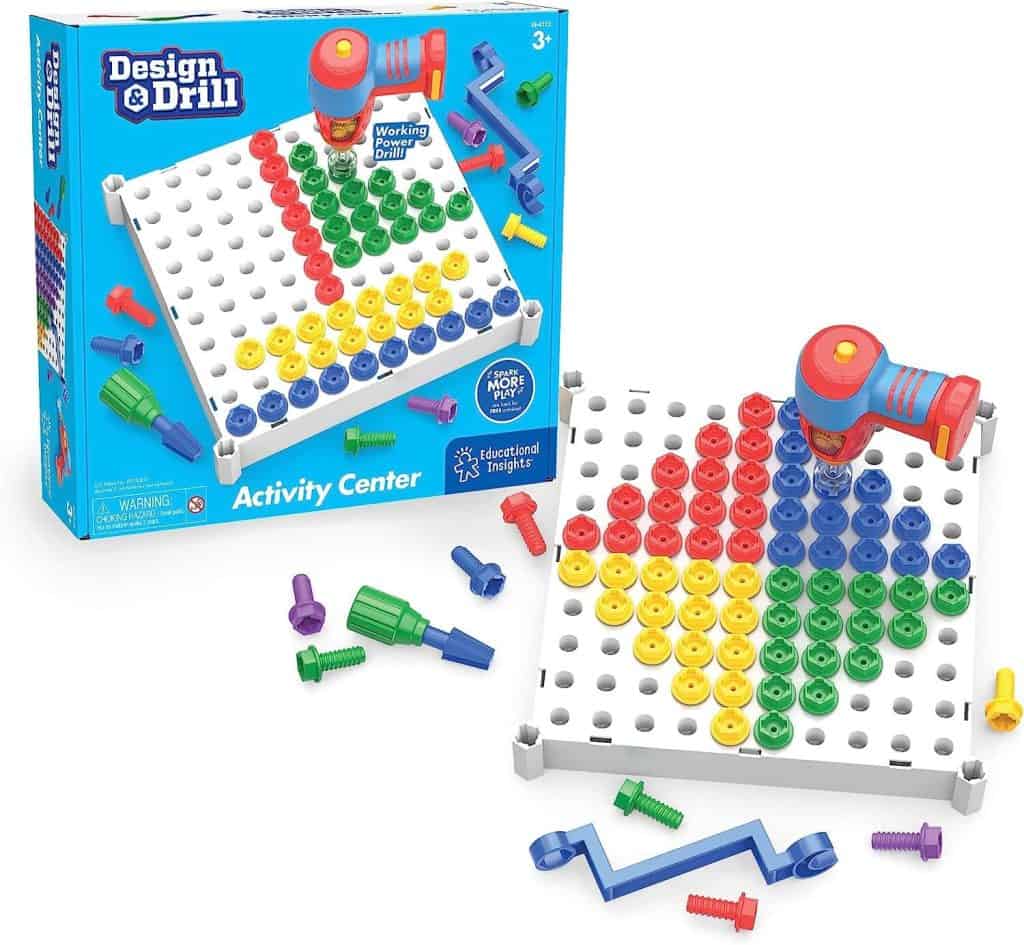
Design and Drill Activity Center
For the 3+ age crowd. A simple toy that kids LOVE. Kids can follow the patterns or design their own. My boys had HOURS of fun with this for many years.
Still one of the BEST building toys out there. Kids can build anything with these. The possibilities are endless. Open-ended play that will keep them creating for years ahead.
My boys loved this game so much that I’ve bought it multiple times for birthdays and holiday gifts for friends. Perfect for refining fine motor skills, learning numbers and colors…all while having fun.
Toddler Toys to Build Gross Motor Skills
Toy Car and Ball Tunnel Ramp Race Track
A remarkably simple, yet super fun and useful toy. Kids can devise new, creative ways to set up the tube to race cars. Open-ended play at its best!
Another seemingly simple toy that kids will enjoy for years. My boys have had theirs for years and they still play with them at ages 6 and 10. Great for building motor skills and burning off energy in those cold winter months.
Another perennial favorite with toddlers. Great for indoor or outdoor use. We used ours for many years both inside and in the backyard. Also great for rolling toys and cars down.
Perfect for toddlers who want to climb on everything. It helps them build those muscles while staying safe (and not climbing on furniture!). Durable enough to last for years.
Another safe, fun way for toddlers to stay busy indoors. This first ride-on bike will help them gain core strength and balance.
Toddler Pretend Play Toys
Great for fostering healthy eating habits and learning food names
Encourage early skill-building and helpfulness with this cleaning set.
A childhood classic that promotes a lot of role playing options.
Great for pretend play and building fine motor skills (my son LOVED this set as a toddler)
Toddlers love to imitate parents’ everyday activities
Costumes add an extra touch of realism to pretend play
Toddler Toys for Building Emotional Skills
Roll and Play: Your Child’s First Game
One of my favorite toys/games this year. Teaches emotional skills, motor skills and following instructions all in a fun way.
Dolls are an excellent way to teach empathy and emotional control.
The first step in learning to manage emotions is identifying them. A perfect first fun emotional learning toy for toddlers.
A cooperative game for toddlers that teaches social-emotional skills, helping and problem-solving.
Toddler Toys for Quiet Time
What kid doesn’t like dress up? These are like the modern version of paper dolls. These magnetic dress-up dolls are sturdy enough for little hands and have many fun options.
Toddlers love stickers! They are fun and do actually help build fine motor skills. These are great for quiet time, road trips or waiting rooms. Plus they are reusable for years!
The best toys for toddlers are ones that not only boost your child’s development but will foster years of meaningful play.
“Children learn as they play. Most importantly, in play children learn how to learn.“
–O. Fred Donaldson
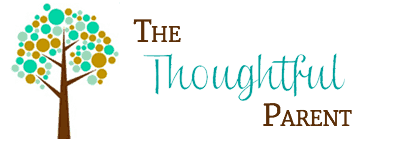



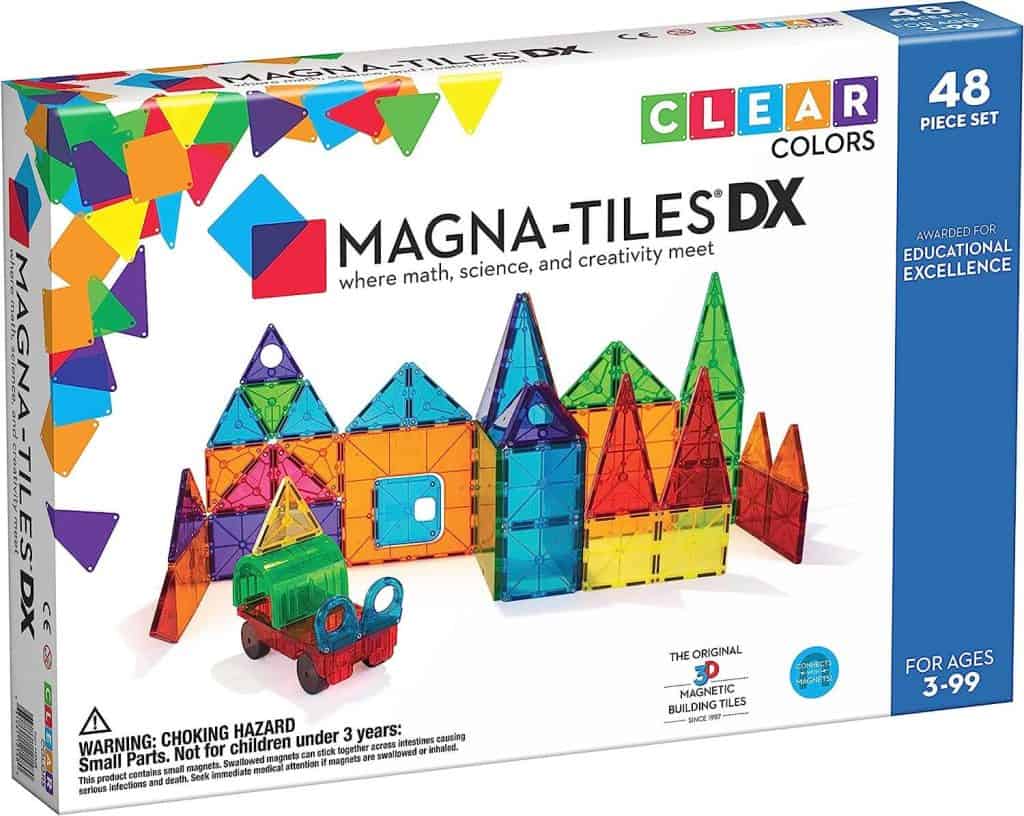
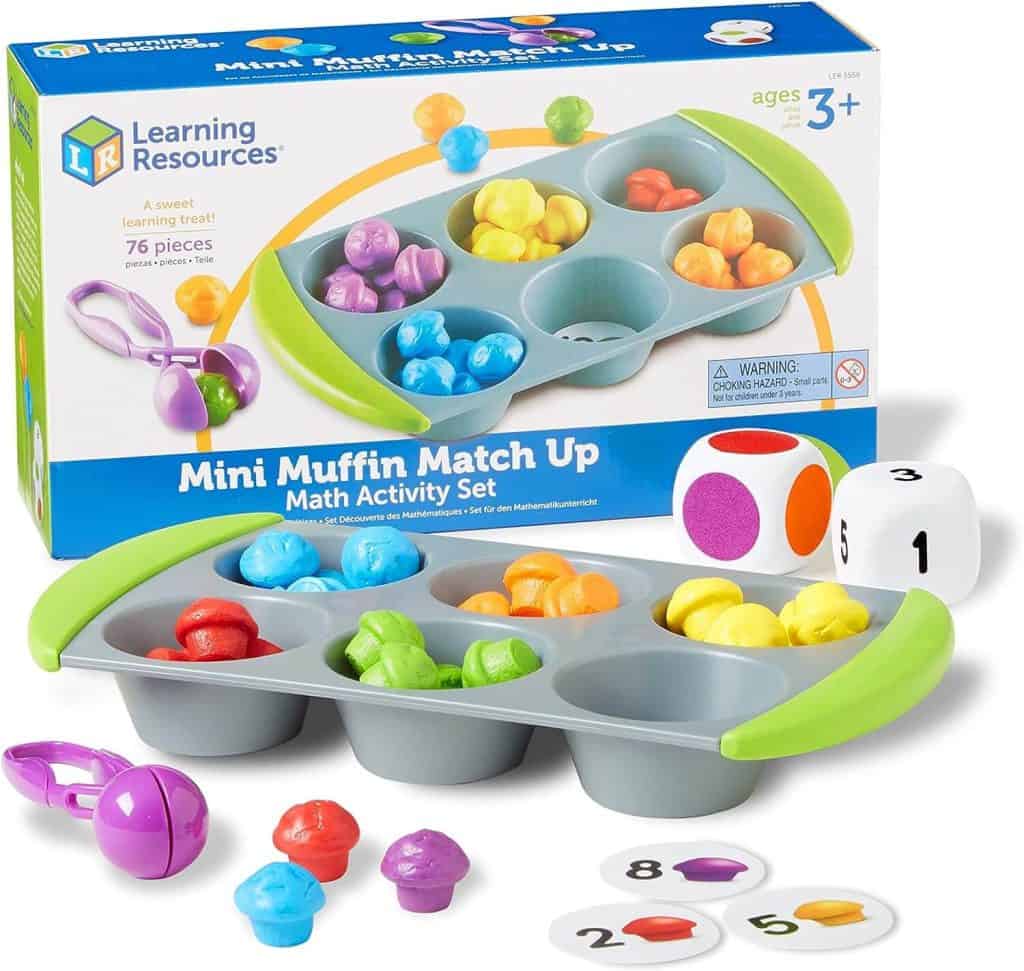



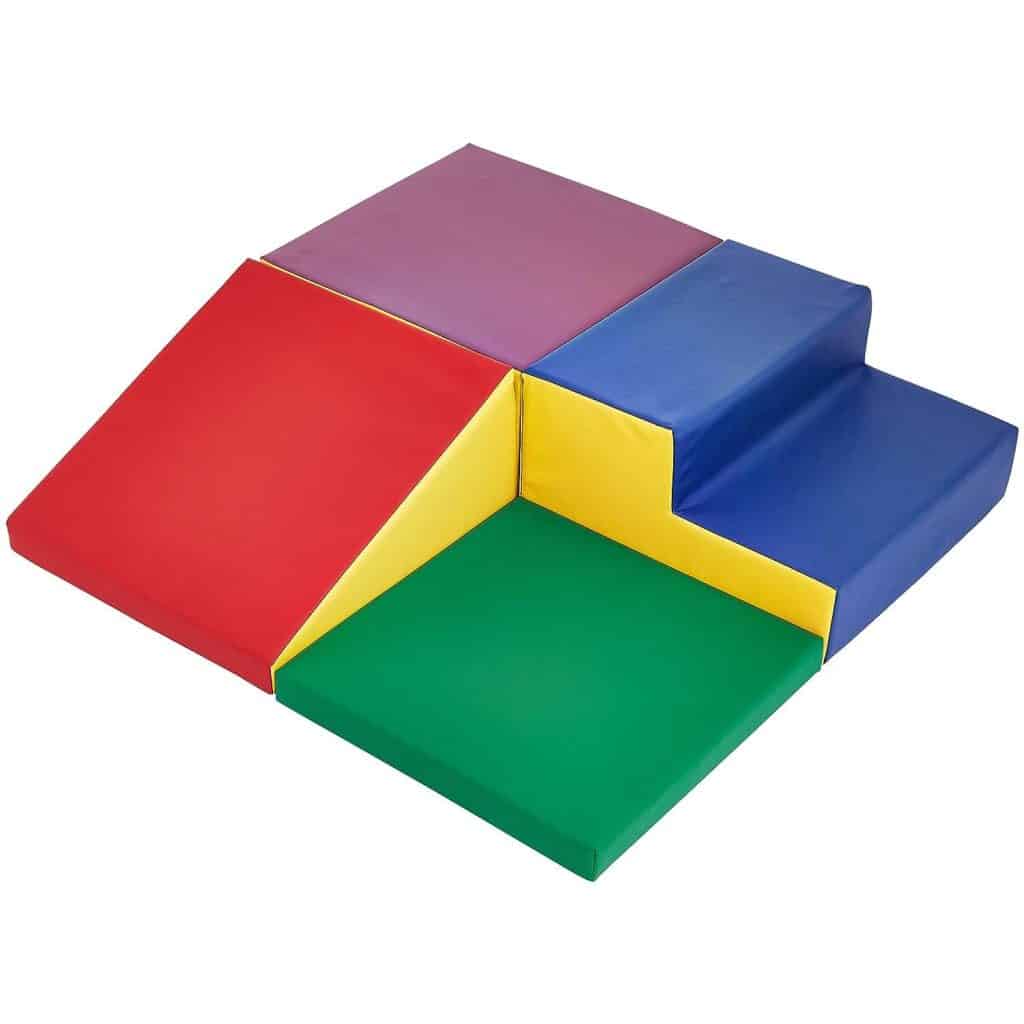
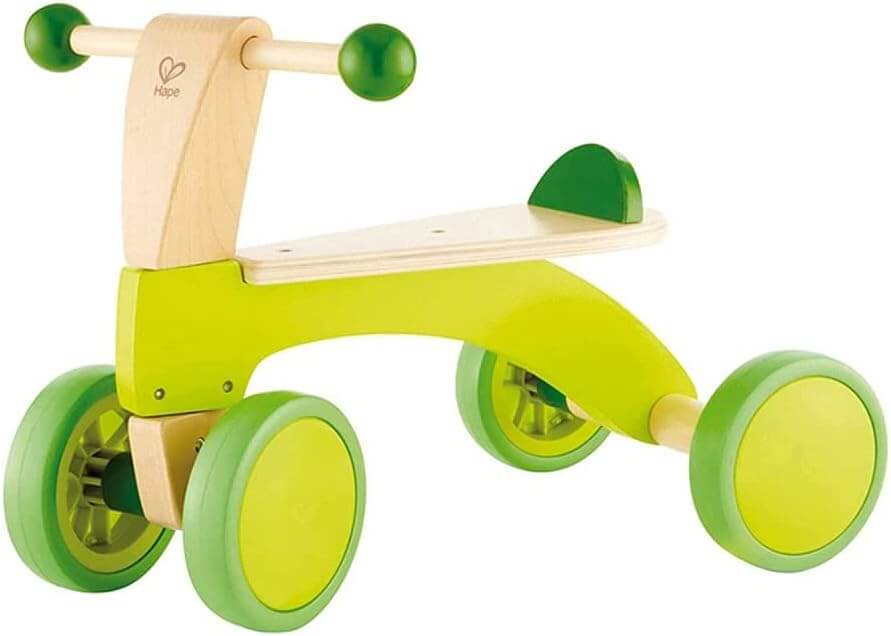
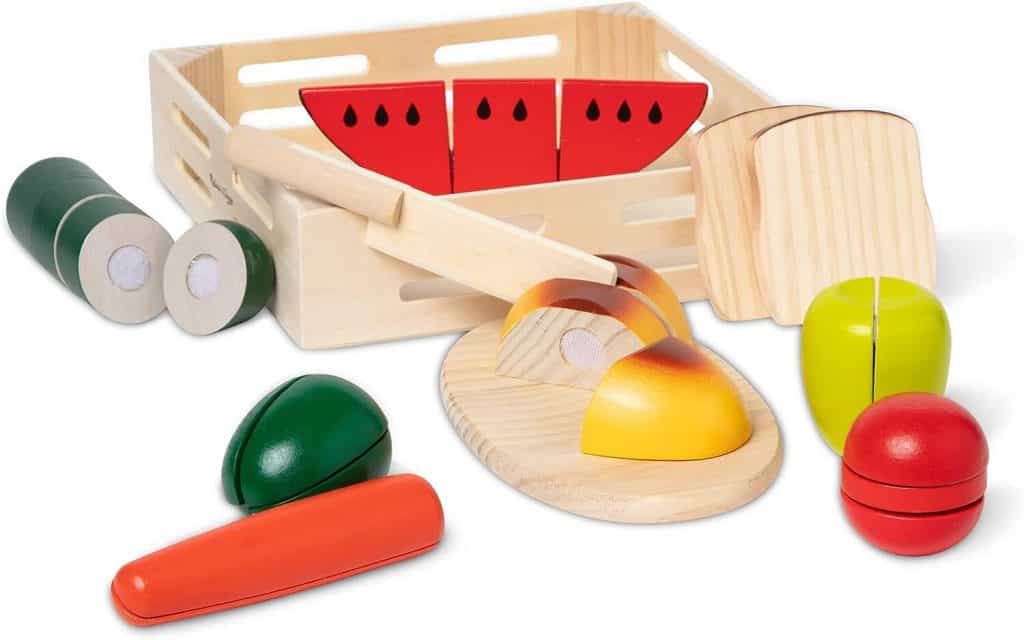
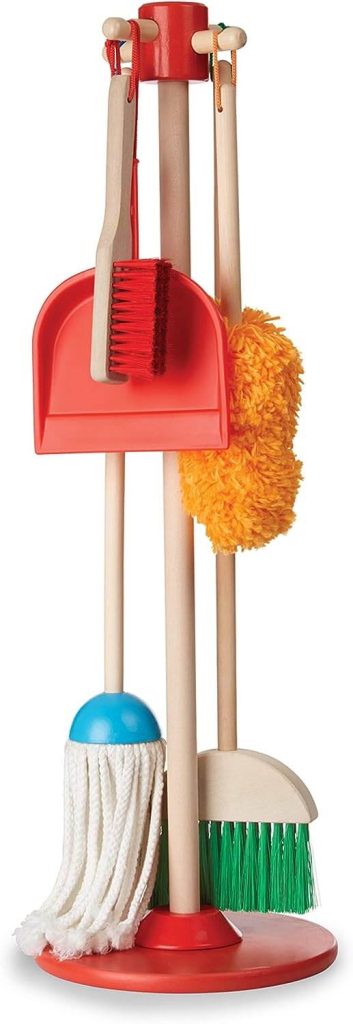




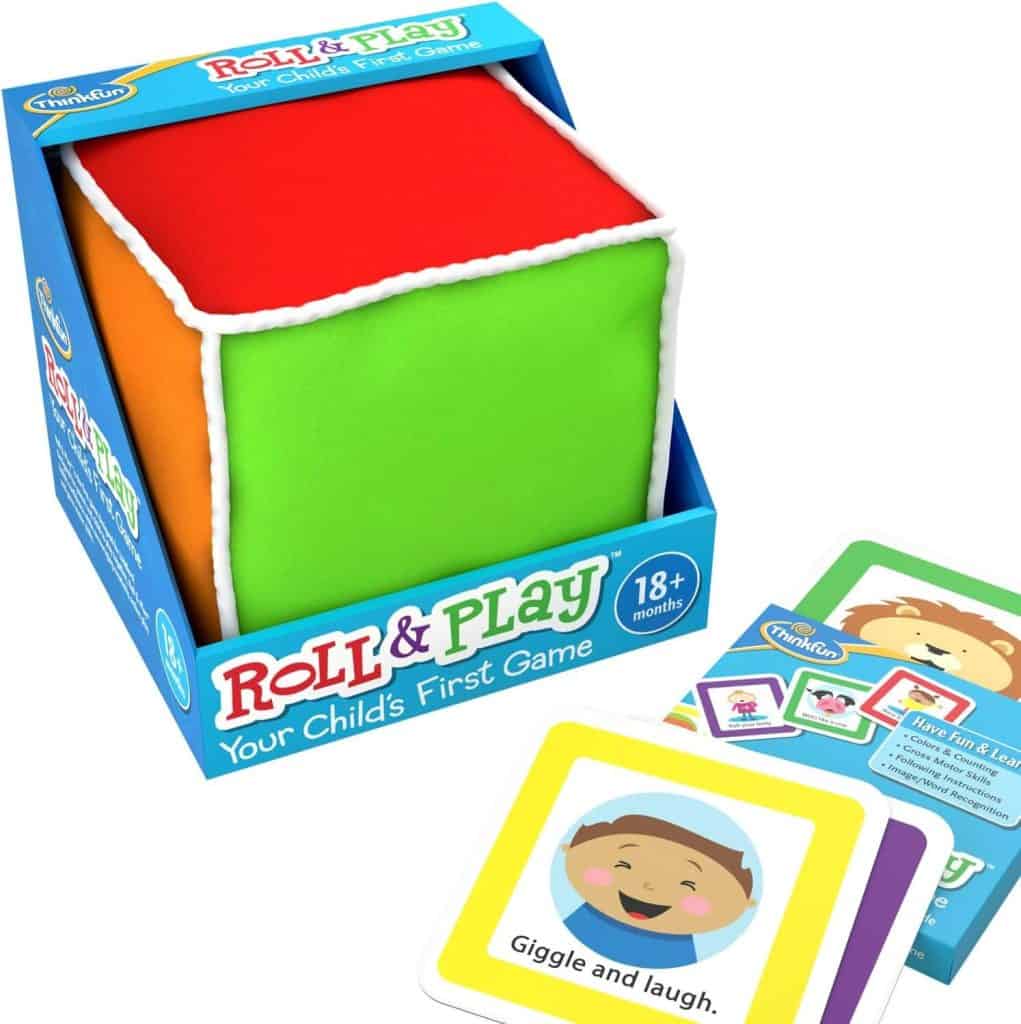


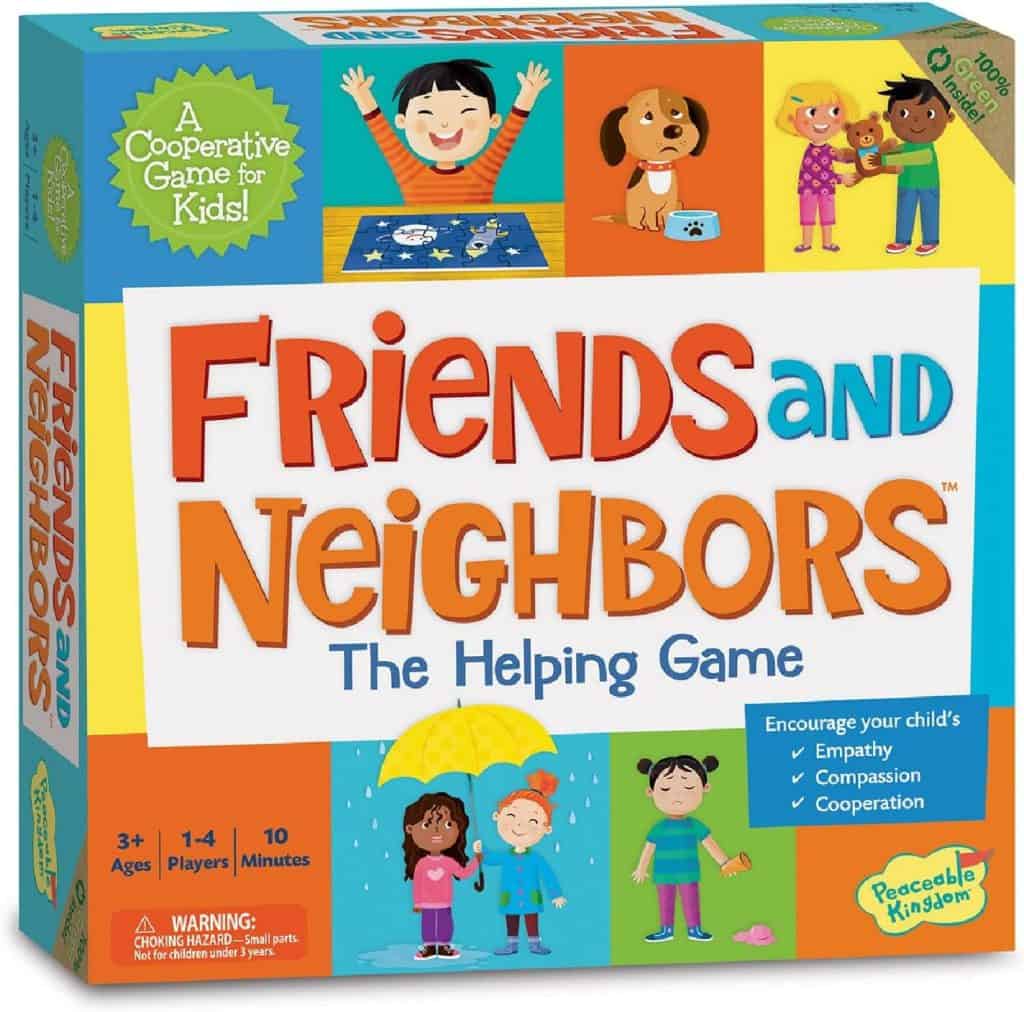

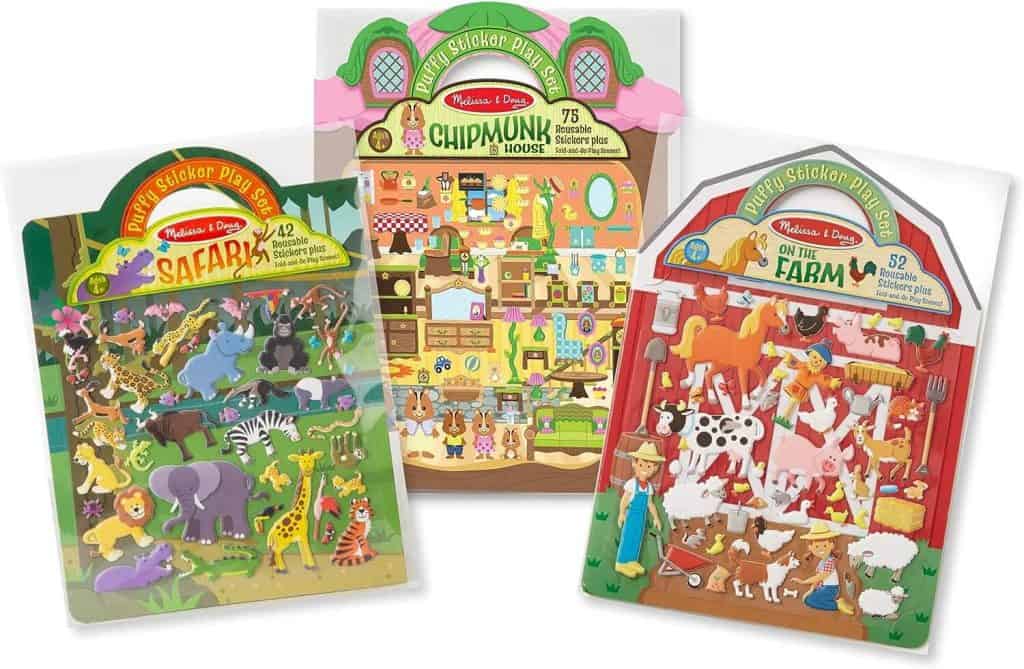
peter clark
Thanks for sharing the information about toddler development toys, I think your blog very helpful for more people.
Amy Thompson
My son just turned 1 so I am on the look out for good toys for him! Thanks for sharing 🙂
Monica
Great ideas! I especially like the toy ideas for quiet time. I’m also very fond of Melissa and Doug toys